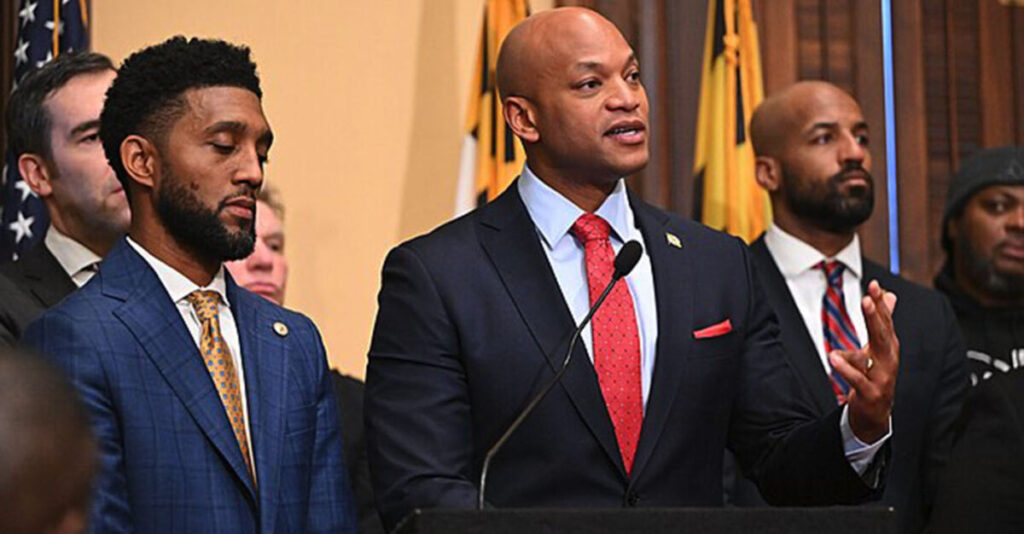By Stacy M. Brown
NNPA Senior National
Correspondent
While cable news pundits and national newspapers often fixate on urban dysfunction, Black mayors across America are delivering measurable, record-breaking progress in public safety—and getting almost no credit for it.
Baltimore Mayor Brandon Scott and Birmingham Mayor Randall Woodfin have overseen some of the steepest reductions in violent crime their cities have experienced in decades.
But they are far from alone.
From New York to Los Angeles to Chicago, Black mayors are proving that talent, vision, and a relentless focus on evidence-based policy—not tokenism—are transforming communities. Yet their achievements have largely been ignored by mainstream media outlets that rarely look past sensational headlines.
Baltimore, long branded one of America’s most dangerous cities, released midyear crime data showing a 22% drop in homicides compared to the same period last year. Nonfatal shootings are down 19%, and juvenile homicide victims have declined by an astonishing 71%. Police are solving more crimes, with a homicide clearance rate of 64% and a nonfatal shooting clearance rate 20 percentage points above the department’s 10-year average.

(Pat Siebert/ Wikimedia Commons, Maryland GovPics)
“These historic lows are the result of a comprehensive, evidence-based public safety strategy that we have implemented in partnership with residents,” Mayor Scott said. “But our work is far from over—68 lives lost to violence is 68 too many.”
The progress didn’t happen by chance.
Under Scott’s leadership, the Baltimore Police Department has combined targeted enforcement with offers of help.
Commissioner Richard Worley described how the Group Violence Reduction Strategy works: “We go out and give them a letter and basically say, ‘Listen, we know you were doing the shooting. We want you to put the guns down, or we will take you and your entire drug operation off the street. But here are the services—job training, education, relocation.’”
Meanwhile, in Birmingham, Mayor Woodfin has led an aggressive, community-driven approach that’s paid off. The city’s homicide rate has fallen 52% compared to last year, and the clearance rate for homicides has surged to 79%, a level rarely seen in major cities.
“The Birmingham Police Department is extremely aggressive in what they’re doing and how they’re taking a different approach in policing our community,” Woodfin said.
He credited a blend of new technology, such as the Real Time Crime Center, and grassroots cooperation.
“When you share information, it doesn’t allow the criminal element to be emboldened and hide behind fear of people,” Woodfin explained. “Those who are killing people are not just walking our streets.”
Birmingham Police Chief Michael Pickett said the city’s street outreach teams are also preventing retaliatory shootings before they happen.
“We are really, really hammering at it,” Pickett told the City Council. “I am very appreciative of all the men and women in the Birmingham Police Department who are leading our fight.”
While total violent crime in Birmingham has edged up slightly, the plunge in homicides shows that sustained focus and coordination can work—even if major media don’t bother to cover it. State and federal partners in Maryland have also acknowledged Baltimore’s progress.
“Baltimore City released a midyear report showing the fewest homicides ever recorded at this point in a single year,” Maryland Governor Wes Moore’s office said in a statement.
Across the country, other Black mayors are driving similar results.
In New York City, Mayor Eric Adams has presided over a 24% drop in shootings and a 14% decline in murders so far in 2025, the fewest shooting incidents recorded in more than a decade. Robberies and burglaries are also down, with NYPD data showing consistent reductions across nearly every major crime category.
On the West Coast, Los Angeles Mayor Karen Bass saw homicides fall 14% in 2024 and gang-related killings drop nearly 45% in areas targeted by community safety programs. Overall violent crime declined by 3%, and property crimes like burglary and auto theft dropped by thousands of incidents compared to the prior year.
In Chicago, Mayor Brandon Johnson has overseen a 22% decrease in murders and a 31% drop in shootings through early 2025, reaching the city’s lowest homicide totals in over a decade.
Officials credit community-based outreach and investments in neighborhood violence prevention. And in Atlanta, Mayor Andre Dickens announced that violent crime was down nearly 16% in 2024, with homicides decreasing and property crime dropping as well. The city has invested in hiring more officers while expanding the At-Promise Centers that connect youth with educational and mental health resources.
In both large and mid-sized cities, the results are undeniable: fewer families burying loved ones, more cases solved, and more residents willing to engage with police.
But to hear much of the national narrative, you’d never know it. As several social media users have pointed out, in Baltimore, Birmingham, New York, Los Angeles, Chicago, and Atlanta, Black leadership is not a box to check or a headline to boast about. It’s what drives real, life-saving change—whether the national media notices or not.
“While we acknowledge the historic lows we are experiencing, we must simultaneously acknowledge that there is much more work to do,” Scott stated. “And our success makes me commit even further to doing it.”




